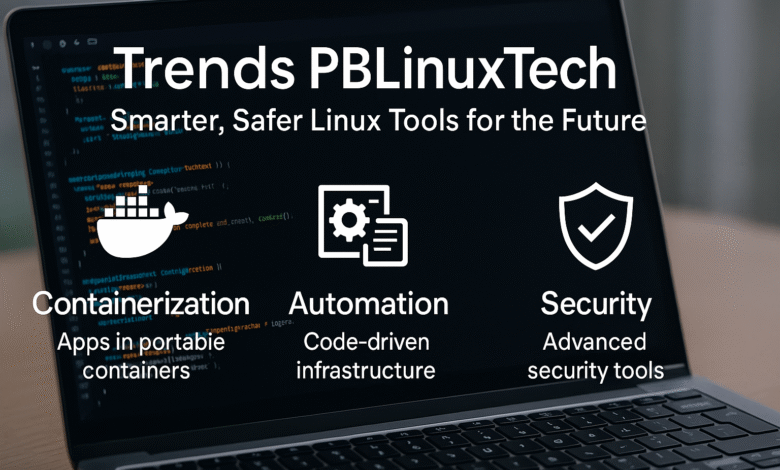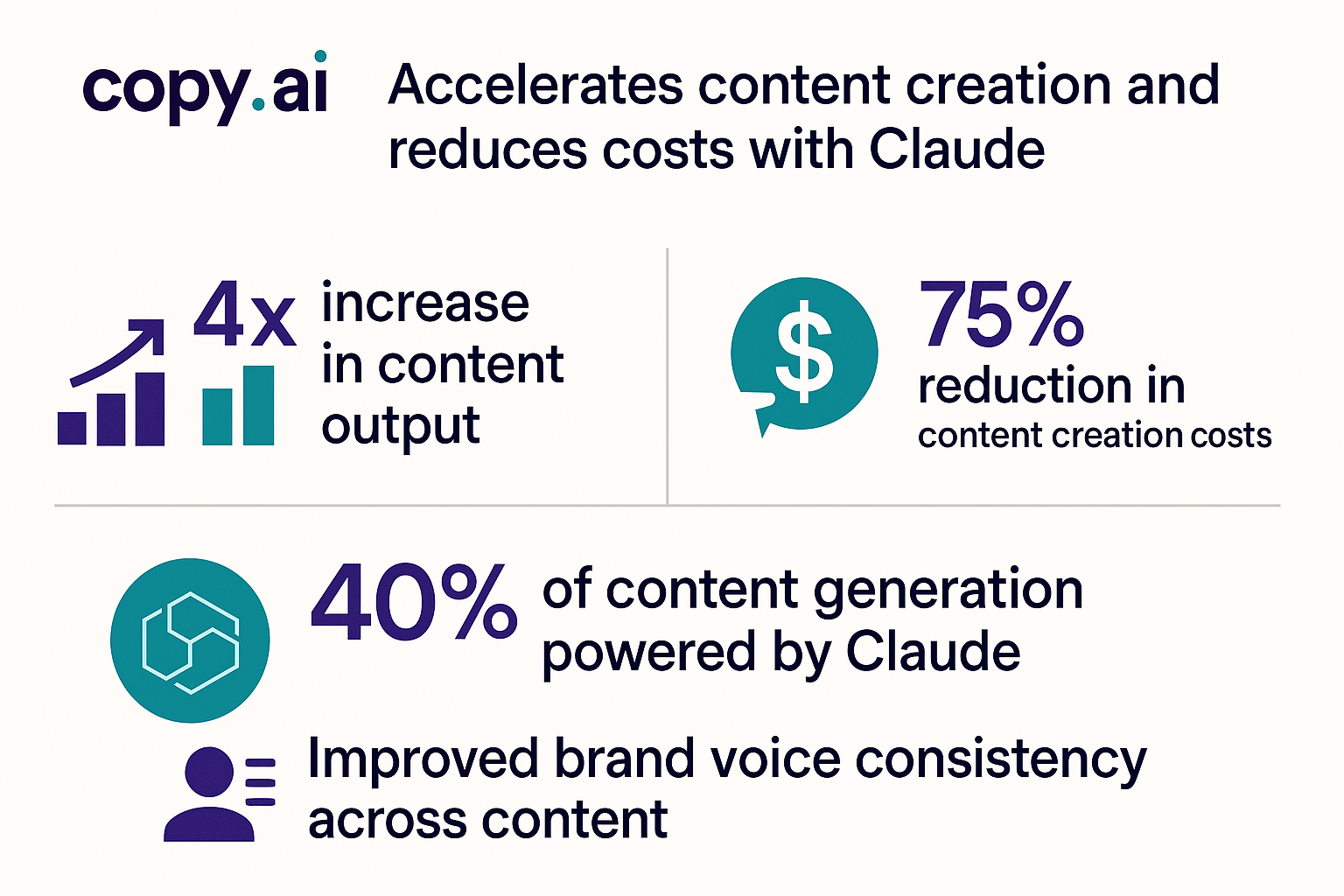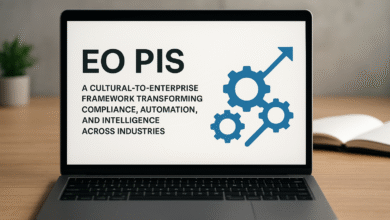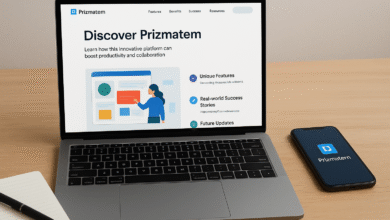Trends PBLinuxTech: Smarter, Safer Linux Tools for the Future

Introduction
The Linux ecosystem is evolving at an impressive pace, and Trends PBLinuxTech represents one of the most significant steps forward in how developers, administrators, and IT professionals interact with open-source systems. With the rising demand for lightweight applications, faster deployments, and stronger cybersecurity, Linux platforms have introduced smarter, safer, and more accessible tools.
This article explores the essential innovations behind Trends PBLinuxTech—covering containerization, automation through Infrastructure as Code (IaC), and advanced security practices. We will look at how these technologies are shaping Linux in 2025 and beyond, why they matter, and how both professionals and students can take advantage of them.
Understanding Trends PBLinuxTech
When discussing Trends PBLinuxTech, we are essentially looking at the core directions in which Linux technology is advancing. These can be divided into three major pillars:
-
Containerization – dividing applications into small, portable units for easier management.
-
Automation and IaC – automating server setups, updates, and scaling using code-driven configurations.
-
Enhanced Security – employing stronger, built-in tools to protect against unauthorized access and cyberattacks.
Together, these three areas make Linux systems more powerful, secure, and accessible to a wider audience.
Containerization: A Game-Changer for Linux
One of the biggest highlights of Trends PBLinuxTech is the rise of containerization. Containers act like lightweight, portable boxes that hold specific parts of an application. These boxes can be easily moved, tested, and deployed across different environments without compatibility issues.
-
Docker is the go-to tool for building containers.
-
Kubernetes manages multiple containers at once, making it easier for businesses to handle complex applications.
Benefits of Containerization
| Feature | Benefit |
|---|---|
| Lightweight | Uses fewer system resources |
| Portable | Runs consistently across different Linux systems |
| Easy to Fix | Only individual parts need updates, reducing risks |
| Safe Testing | New code can be tested without breaking the whole system |
For instance, instead of upgrading one massive application at once, developers can update a single container. If problems occur, rolling back to a previous version is quick and simple. This makes containers both efficient and reliable.
Automation and Infrastructure as Code (IaC)
The second major area in Trends PBLinuxTech is automation. Traditionally, system administrators had to configure servers manually, which was time-consuming and error-prone. With Infrastructure as Code (IaC), these tasks can now be scripted and executed consistently across multiple machines.
Popular IaC and Automation Tools
-
Ansible
-
Puppet
-
Chef
These tools allow administrators to define their infrastructure in scripts—similar to writing a recipe. Once written, the same process can be repeated perfectly, avoiding human mistakes and saving hours of work.
Automation also plays a vital role in managing updates. For organizations running hundreds of servers, it ensures every machine receives the same update simultaneously. Beginners can benefit from ready-made templates, which simplify the process even further.
Security at the Core of PBLinuxTech
Security is not just an add-on—it is central to Trends PBLinuxTech. As cyber threats grow more advanced, Linux platforms now provide stronger defenses built directly into the system.
Essential Security Tools
-
SELinux: Manages system access controls.
-
AppArmor: Restricts application behavior for added safety.
-
nftables: Modern firewall for controlling network traffic.
-
iptables: Still widely used for traffic management.
-
Automated Scanners: Detect system weaknesses and notify administrators.
These tools ensure that vulnerabilities are spotted before attackers can exploit them. For example, SELinux and AppArmor provide security layers that prevent unauthorized apps from making dangerous system changes. At the same time, nftables and iptables manage who gets into your network.
Real-World Uses of Trends PBLinuxTech
The real power of Trends PBLinuxTech lies in how these tools are used daily across industries:
-
E-commerce companies rely on containers to handle sudden spikes in traffic during sales.
-
System administrators automate updates across multiple servers, saving time and reducing stress.
-
Healthcare and banking sectors use Linux security features to protect sensitive data like medical records and financial details.
In every scenario, these trends ensure systems remain reliable, secure, and cost-efficient.
Open-Source and Community Power
A unique strength of Linux—and by extension Trends PBLinuxTech—is its open-source community. Developers worldwide contribute to updates, bug fixes, and feature improvements. This collaborative approach ensures that Linux evolves faster than closed-source systems.
Users can easily find help through forums, blogs, and video tutorials. Even if you are just starting out, chances are someone has already solved the same problem you’re facing. This global teamwork gives Linux a strong advantage over proprietary platforms.
What Makes PBLinuxTech Different?
Unlike standalone technologies, Trends PBLinuxTech integrates containerization, automation, and security into a unified system. Instead of treating them as separate tools, Linux weaves them together to create an environment where small teams can compete with larger organizations.
This balance between power and simplicity is what sets PBLinuxTech apart. It is not simply another Linux distribution—it is an adaptable platform built to meet modern computing needs.
Accessibility for Students and Beginners
One of the most important aspects of Trends PBLinuxTech is accessibility. The tools are designed with user-friendly interfaces and step-by-step guides. This makes them suitable for students, teachers, and hobbyists who want to learn Linux in practical ways.
In fact, many educational programs now include PBLinuxTech in their curriculum, giving learners hands-on experience with real-world tools. This ensures that tomorrow’s IT professionals are already equipped with the skills needed in industry.
Frequently Asked Questions (FAQs)
Q1: What is the main focus of Trends PBLinuxTech?
The main focus lies in three areas: containerization, automation (IaC), and advanced security features that improve both efficiency and safety.
Q2: Is it difficult to learn these tools?
Not at all. Tools like Docker, Ansible, and SELinux come with extensive documentation, tutorials, and community support. Even beginners can quickly grasp the basics.
Q3: Can Trends PBLinuxTech be used on personal computers?
Yes. Whether you’re running a laptop, desktop, or small devices like Raspberry Pi, you can implement these tools effectively.
Q4: Are the tools in PBLinuxTech free?
Yes. Since most are open-source, they are free to use, modify, and share.
Q5: Do companies use these tools in production environments?
Absolutely. Organizations across industries—including finance, healthcare, and e-commerce—rely on them for mission-critical systems.
Conclusion
Trends PBLinuxTech paints a clear picture of where Linux is heading. With containerization making applications lighter and more flexible, automation reducing human error, and security tools ensuring robust defenses, Linux is well-equipped for the future.
These technologies are not just for advanced system administrators. They are accessible to beginners, students, and small businesses, making Linux a platform for everyone. By following these trends, you can stay ahead in the technology race and prepare your systems for tomorrow’s challenges.



